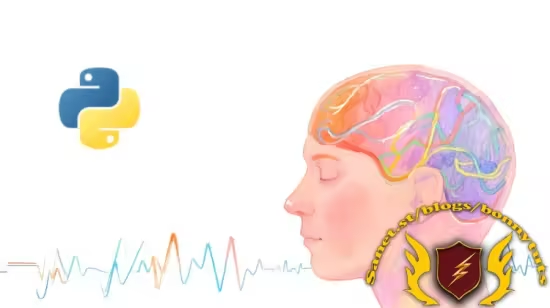
Published 4/2025
Created by Shengjian Hu
MP4 | Video: h264, 1280×720 | Audio: AAC, 44.1 KHz, 2 Ch
Level: Beginner | Genre: eLearning | Language: English | Duration: 26 Lectures ( 3h 10m ) | Size: 903 MB
Master EEG signal processing with Python: from data preprocessing to time, frequency, and time-frequency domain analysis
What you’ll learn
Understand the fundamentals of EEG, including its history, brain signal generation, and key applications in neuroscience and clinical settings.
Learn how to import, preprocess, and clean EEG data using Python and the MNE library, including techniques like filtering and artifact removal.
Master EEG analysis methods, including time-domain, frequency-domain, and time-frequency approaches, to extract meaningful insights from brain signals.
Apply EEG data analysis to real-world scenarios, such as studying cognitive processes, sleep patterns, and brain-machine interface applications.
Requirements
Basic Python Knowledge: Familiarity with Python programming (e.g., understanding variables, loops, and functions) is recommended but not mandatory.
Interest in Neuroscience: A curiosity about brain function and EEG technology will help learners stay engaged, but no prior neuroscience knowledge is required.
Access to a Computer: A computer capable of running Python and related libraries (e.g., Jupyter Notebook, MNE) is necessary for hands-on practice.
Open Mind and Willingness to Learn: No advanced technical skills or prior experience in EEG analysis are required—this course is beginner-friendly and designed for anyone!
Description
Dive into the fascinating world of electroencephalography (EEG) with this comprehensive, beginner-friendly course that transforms complex neuroscience concepts into accessible knowledge. “Brain Waves Decoded” equips you with both theoretical foundations and practical skills to analyze the brain’s electrical activity using Python.Starting with the fundamentals of EEG technology and its historical development, you’ll quickly progress to hands-on data analysis using Python and the powerful MNE library. The course is thoughtfully structured to guide you through the complete EEG analysis workflow:First, you’ll master essential preprocessing techniques to clean raw EEG data, including re-referencing, filtering, and artifact removal using Independent Component Analysis (ICA). These crucial skills ensure your analyses are based on high-quality signals rather than noise.Next, you’ll explore three complementary analytical frameworks:Time-domain analysis: Capture the brain’s immediate responses to stimuli through Event-Related Potentials (ERPs), learning to interpret components like P300 and N400Frequency-domain analysis: Decode the brain’s rhythmic patterns using Fourier transforms and spectral analysis, revealing insights into cognitive states through alpha, beta, and theta wavesTime-frequency analysis: Visualize dynamic changes in neural oscillations using short-time Fourier transforms and wavelet analysis, essential for understanding complex cognitive processesThroughout the course, you’ll work with real-world datasets covering diverse applications—from cognitive experiments to sleep studies and motor imagery paradigms—preparing you for practical research scenarios. Each concept is reinforced with intuitive analogies, clear visualizations, and step-by-step code implementations, making complex signal processing accessible regardless of your background.What sets this course apart is its perfect balance between theory and application. Rather than overwhelming you with mathematical derivations, we focus on building intuitive understanding through carefully crafted visualizations and real-world examples. You’ll learn to think like an EEG researcher, identifying common pitfalls in data collection and analysis, and developing strategies to overcome them.The skills you gain extend beyond academic research into rapidly growing fields like neuromarketing, neuroergonomics, and clinical diagnostics. As brain-computer interfaces continue to advance, professionals with EEG analysis expertise are increasingly sought after across industries from healthcare to gaming and beyond.No prior experience in neuroscience or signal processing is required—we’ll build your knowledge from the ground up. By the end of the course, you’ll be able to independently design, implement, and interpret EEG studies using Python. You’ll join a growing community of neurotechnology enthusiasts equipped to contribute to this exciting frontier where computational methods meet neuroscience.By the end of this journey, you’ll possess a versatile EEG analysis toolkit applicable to neuroscience research, clinical applications, and cutting-edge brain-computer interfaces.
Password/解压密码www.tbtos.com
转载请注明:0daytown » Brainwave Surfing: Riding the EEG Signals with Python